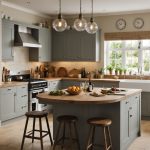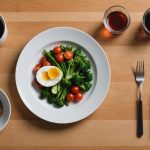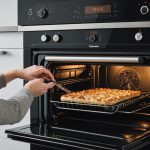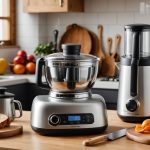Heat-Resistant Countertop Materials
Choosing the right heat-resistant countertops for your kitchen is crucial. Different materials offer varying levels of heat resistance, impacting performance. Granite, for instance, is known for withstanding high temperatures without warping. It’s a top choice due to its durability, though it requires sealing to maintain its quality over time.
Quartz, engineered from natural stone, combines heat resistance with sleek aesthetics. While not as heat-tolerant as granite, it’s less prone to staining and doesn’t need sealing, making maintaince easier. However, placing hot pots directly onto quartz isn’t recommended, as it can cause discoloration.
In the same genre : Global Flavor Fusion: Crafting a Culturally-Inspired Kitchen for Diverse Culinary Experiences
Stainless steel offers superior heat resistance, providing a robust and industrial look for modern kitchens. It’s nearly impervious to heat and stains, making it a popular choice for professional kitchens. Despite its hardiness, it can scratch easily, requiring regular maintenance to maintain its lustrous appearance.
Comparing these materials, granite excels in natural beauty and durability, quartz in low maintenance, and stainless steel in professional appeal. Each material brings unique pros and cons to consider, centered around their performance, aesthetics, and upkeep needs. For optimal kitchen utility, weigh these aspects according to your cooking habits and design preferences.
Also to read : Crafting the Perfect Kitchen for an Energized Raw Food Lifestyle
Mold-Resistant Backsplash Materials
Mold-Resistant Backsplashes are vital for ensuring hygiene in kitchens where moisture and heat are prevalent. Mold thrives in damp environments, making kitchens particularly susceptible. Selecting the right materials can mitigate this risk significantly.
Glass, ceramic, and porcelain are top materials appreciated for their mold resistance. Each offers a distinct blend of aesthetics and practicality. Glass backsplashes provide sleekness and are easy to clean, enhancing modern kitchen designs effortlessly. Meanwhile, ceramic options bring a traditional warmth to kitchens, offering versatility in colours and patterns. Porcelain, known for its sturdiness, suits high-traffic kitchens needing both beauty and resilience.
In terms of aesthetics, these materials cater to diverse tastes. Glass, with its glossy finish, complements contemporary spaces. Ceramic’s rustic charm appeals to those favouring classic looks, while porcelain’s refined texture suits varied styles from rustic to modern.
Incorporating Mold-Resistant Backsplashes not only elevates kitchen hygiene but also boosts its visual appeal. When deciding, consider both maintenance ease and style harmony with kitchen decor, ensuring both functional necessity and design consistency are met.
Durability and Maintenance
Durability and maintenance are integral in preserving the attractiveness and functionality of kitchen surfaces. Countertop durability depends largely on material. Granite, a natural and robust choice, resists scratches and heat. However, it needs regular sealing to protect its surface. Comparatively, quartz is slightly less durable due to its engineered nature, but doesn’t require sealing, offering hassle-free upkeep.
For optimal maintenance of these surfaces, adhere to specific practices. Use trivets or potholders to protect all types of countertops from high heat, especially quartz. Meanwhile, cleaning granite should involve mild detergents and non-abrasive tools to avoid damaging the sealant.
Backsplash materials, like ceramic, glass, and porcelain, demand straightforward preventive measures. Ensuring they’re dry reduces mold risk, crucial for maintaining hygiene in kitchens. Regular wipe-downs with non-abrasive cleaners keep them sparkling without causing damage.
Long-term care involves scheduled cleaning and inspections. For granite, resealing annually is advisable, while other surfaces benefit from consistent gentle cleaning routines. Emphasising countertop durability and appropriate maintenance ensures longevity, marrying practical utility with continuous aesthetic appeal. Engaging with these care strategies helps maintain a vibrant and functional kitchen space.
Aesthetic Appeal
Creating a harmonious kitchen involves balancing kitchen aesthetics with functionality. The selection of heat-resistant and mold-resistant materials plays a crucial role in enhancing the visual allure of your kitchen. Designs are increasingly trending towards minimalist aesthetics and unique material combinations that not only offer impressive durability but also elevate the kitchen’s artistic appeal.
Heat-resistant countertops like granite, quartz, and stainless steel come in various finishes and colours, allowing them to cater to a wide array of style preferences. Granite provides natural elegance, quartz offers a sleek, modern look, while stainless steel brings a professional, industrial vibe.
Mold-resistant backsplashes such as glass and ceramic not only ensure hygiene but also contribute significantly to the overall design. Glass backsplashes add a contemporary touch with their reflective properties, while ceramic offers a timeless charm with its diverse patterns and hues.
Ultimately, choosing materials that match your personal style and meet functional needs is essential. For a cohesive look, consider how these surfaces complement existing elements such as cabinetry and flooring. Embracing current design trends alongside your unique tastes ensures a kitchen that is both stylish and practical.
Cost Considerations
When planning a kitchen renovation, understanding countertop prices and backsplash costs is essential. Materials like granite, quartz, and stainless steel typically present varying price ranges due to their heat resistance and durability. Granite, recognised for its robustness and natural beauty, generally demands a higher investment owing to its premium nature and the need for professional installation. Quartz, striking a balance between cost and ease of maintenance, offers a more budget-friendly option. Stainless steel, while highly resistant to heat, falls on the higher end due to its industrial appeal and installation complexities.
Factors influencing these costs include material quality, slab thickness, and intricate installation requirements. Ensuring your renovation budget aligns with these factors involves considering long-term value and maintenance needs.
For mold-resistant backsplashes, options like glass, ceramic, and porcelain also exhibit pricing diversity. Glass backsplashes might incur higher costs due to their modern elegance and complex fitting processes. Ceramic and porcelain provide economical substitutes without compromising mold resistance and aesthetic charm.
To efficiently manage your kitchen upgrade finances, prioritise essential features and explore alternatives that align with your style and budget. By doing so, you can achieve striking kitchen aesthetics while ensuring functionality and value remain at the forefront.





